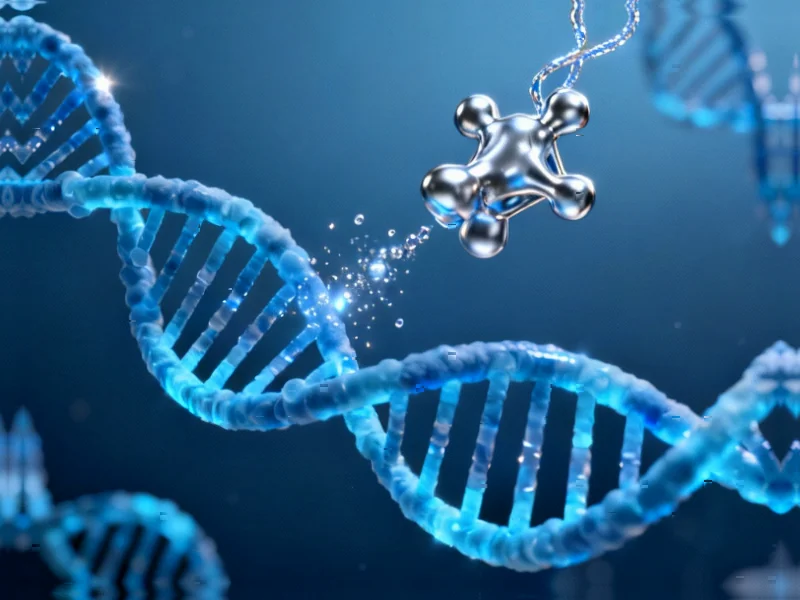The Hidden Architecture of RNA Targets
RNA molecules possess an intricate architectural landscape that goes far beyond their linear genetic code. The natural folding of RNA into secondary structures through intramolecular base pairing creates a dynamic environment where molecular interactions compete for dominance. This structural complexity presents both challenges and opportunities for CRISPR-based diagnostic systems, particularly those leveraging Cas13’s RNA-targeting capabilities. While previous research had noted correlations between RNA structure and Cas13 performance, the precise mechanisms remained obscured by the intertwined nature of sequence and structure.
Table of Contents
Decoupling Structure from Sequence
Researchers have now developed an innovative approach to isolate structural effects from sequence variations. By engineering single-stranded RNA protospacers with controlled structural elements—including RNA hairpins and complementary “occluder” oligonucleotides—the team created a systematic framework for studying how target accessibility influences Cas13 activation. The experimental design allowed precise manipulation of structural complexity while maintaining identical primary sequences, enabling clear attribution of observed effects to structural factors rather than sequence variations., according to related news
The findings revealed dramatic variations in Cas13 activity—spanning an order of magnitude—for identical sequences with different structural configurations. This structural sensitivity proved consistent across multiple Cas13 orthologs, including LwaCas13a, LbuCas13a, and RfxCas13d, demonstrating a fundamental property of the Cas13 system rather than a variant-specific characteristic., according to recent studies
Beyond Thermodynamic Predictions
Conventional equilibrium models based on free energy calculations failed to adequately explain the observed activity patterns. The discrepancy between massive thermodynamic driving forces and relatively modest activity differences pointed toward kinetic rather than equilibrium-controlled processes. As lead researcher Dr. Omar Abudayyeh noted, “The system would require temperatures approaching 7,500 Kelvin to match equilibrium predictions with our experimental results—clearly indicating we’re dealing with a different mechanistic paradigm.”, according to related news
The Strand Displacement Revolution
The research team identified strand displacement as the governing mechanism for Cas13 activation on structured targets. In this model, Cas13 initially binds to accessible regions of the RNA target, then undergoes a one-dimensional random walk to displace competing structural elements. The success of this displacement process—and consequently Cas13 activation—depends critically on the balance between the random walk completion time and the complex dissociation rate.
Through massively multiplexed assays testing over 4,600 structural conditions, the researchers mapped how different occluder positions and lengths influence Cas13 activity. The data revealed several unexpected patterns, including significant asymmetry between 5′ and 3′ occluder effects and the discovery of distinct inhibitory regimes that operate through different mechanisms.
Allosteric Inhibition and Specificity Enhancement
Perhaps most surprisingly, the research uncovered that occluders positioned immediately 3′ to the protospacer region inhibit Cas13 through allosteric mechanisms rather than competitive binding. This finding was supported by electrophoresis mobility shift assays and isothermal titration calorimetry, which showed minimal binding affinity changes despite dramatic activity reductions.
The strand displacement framework provided crucial insights for enhancing Cas13 specificity. By introducing controlled structural barriers, researchers can exploit kinetic differences between perfectly matched and mismatched crRNA binding. As Dr. Jonathan Gootenberg explained, “The structural barrier creates a kinetic filter—perfect matches can overcome it efficiently, while mismatches struggle, giving us a powerful tool for improving discrimination in diagnostic applications.”
Industrial and Diagnostic Implications
These findings have profound implications for industrial molecular diagnostics and biotechnology applications. The ability to rationally design structural contexts around target sequences enables:, as covered previously
- Enhanced specificity for single-nucleotide variant detection in clinical diagnostics
- Improved design rules for CRISPR-based biosensors and detection platforms
- Optimized performance in complex biological samples with structured RNA backgrounds
- Novel engineering approaches for synthetic biology and metabolic engineering applications
The research establishes a new paradigm for understanding and engineering RNA-targeting CRISPR systems, moving beyond sequence-based design to incorporate structural dynamics as a fundamental design parameter. This approach promises to accelerate the development of next-generation molecular diagnostics with unprecedented precision and reliability.
As the field advances toward real-world applications, these structural insights provide critical guidance for developing robust detection systems that maintain performance across diverse sample types and conditions. The integration of structural considerations into Cas13-based platform design represents a significant step forward in the maturation of CRISPR diagnostics for industrial and clinical deployment.
Related Articles You May Find Interesting
- Unlocking the Brain’s Predictive Power: How 7 Tesla fMRI Reveals Our Body’s Inte
- Unlocking Cellular Mysteries: How Single-Cell Language Models Are Revolutionizin
- Breakthrough MEMS Accelerometer Achieves Unprecedented Sensitivity and Range Thr
- Advanced Graph Analytics Uncover Optimal Pathways for Coal Plant Retirement
- Brain’s Glial Cells Show Dramatic Circadian Disruption in Alzheimer’s Model, Rev
This article aggregates information from publicly available sources. All trademarks and copyrights belong to their respective owners.
Note: Featured image is for illustrative purposes only and does not represent any specific product, service, or entity mentioned in this article.



